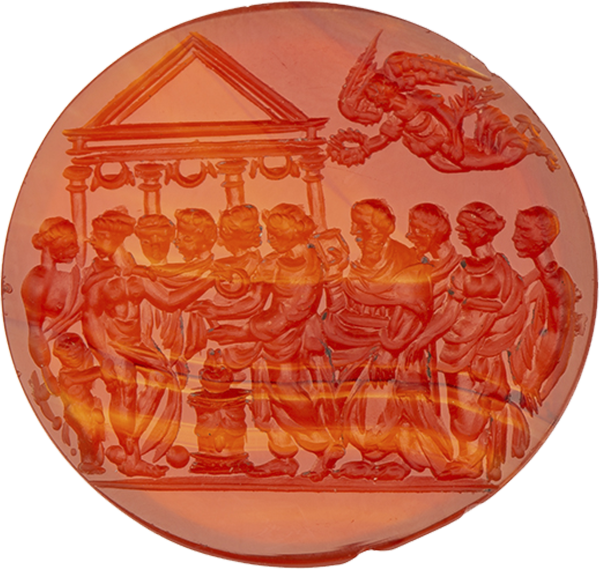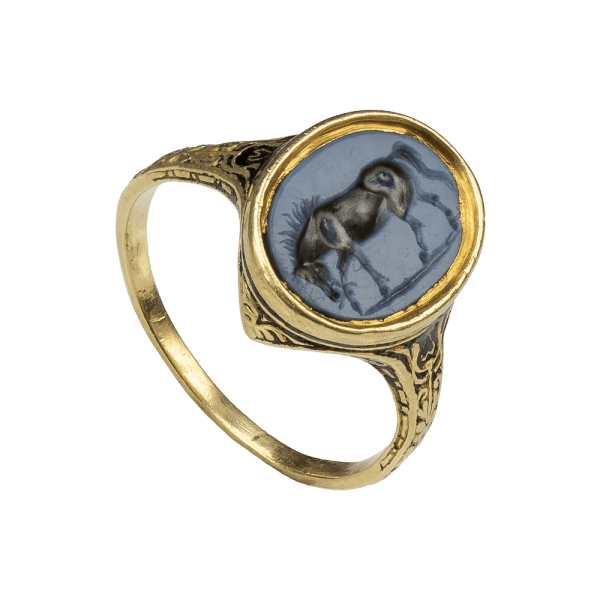


Neoclassical Ring Set with a Carnelian Intaglio of Dionysius
, 18th century (intaglio); c. 1800 (mount)



Neoclassical Ring Set with a Carnelian Intaglio of Dionysius
Description
The open-set carnelian intaglio with beveled edge in gold shows in deep relief the carved-out image of the bearded head of Dionysius (Bacchus to the Romans) in three-quarter profile turned to the right. He wears a wreath of ivy leaves and a cloak along the neckline. The round hoop widens at the ends to support the oval bezel.
Cameos and intaglios have never gone out of fashion. Perfected by the Greeks and Romans, the art of carving stones, either in relief or hollowed out, has been practiced for thousands of years. Taken up again in the Renaissance, after a hiatus during the Middle Ages, carving small sculptures in stone, especially of mythological subjects, was especially popular in the eighteenth century with the revival of classical antiquity known as Neoclassicism. One of the favored themes was Dionysius, god of agriculture, grape harvest, winemaking, as well as madness and ecstasy. Sometimes he is depicted participating in his infamous pleasure-fi lled gatherings (Bacchanalia); often, as here, he is shown portrait-style as a bearded old man, crowned with his wreath of ivy considered sacred to him and sometimes mistakenly identified as grape leaves (see Aschengreen Piacenti/Boardman 2008, nos. 27-29; Boardman et al 2009, no. 10).

